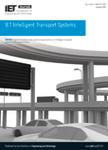版权所有:内蒙古大学图书馆 技术提供:维普资讯• 智图
内蒙古自治区呼和浩特市赛罕区大学西街235号 邮编: 010021

作者机构:Abdelhamid Mehri Constantine 2 Univ MISC Lab Constantine Algeria
出 版 物:《IET INTELLIGENT TRANSPORT SYSTEMS》 (IET Intel. Transport Syst.)
年 卷 期:2020年第14卷第3期
页 面:190-195页
核心收录:
学科分类:0808[工学-电气工程] 08[工学] 0823[工学-交通运输工程]
基 金:The author thanks the anonymous reviewers for their comments and suggestions which helped to improve this paper
主 题:telecommunication network topology fuzzy set theory vehicular ad hoc networks pattern clustering decision making TOPSIS operations research telecommunication network reliability HF-EVAMIX-based clustering algorithm EVAMIX MCDM method technique for order of preference by similarity to ideal solution CH election HF-VIKOR HF-TOPSIS multicriteria decision-making method CH selection cluster-heads election problem hesitant fuzzy multicriteria ranking clustering algorithm hierarchical topology communication reliability network topology VANET vehicular ad hoc network fast-moving nodes stable clustering
摘 要:Fast-moving nodes in vehicular ad hoc network (VANET) make network topology very dynamic, which deteriorates communication reliability and scalability. To overcome this problem, a hierarchical topology can be created using a clustering algorithm. This study presents a novel hesitant fuzzy (HF) multi-criteria ranking framework to deal with cluster-heads (CHs) election problem in VANET. An analogy is suggested between ranking of HF elements and CH selection in VANET . Within the proposed framework, a multiple criteria decision-making (MCDM) method should be used to calculate vehicle eligibility to become CH. In this study, technique for order of preference by similarity to ideal solution (TOPSIS), Vlse Kriterijumska Optimizacija Kompromisno Resenje (VIKOR) and EVAluation of MIXed data (EVAMIX) MCDM methods are applied. A simulation study, under a highway scenario, is conducted to investigate the performance of HF-TOPSIS, HF-VIKOR and HF-EVAMIX-based clustering algorithms. Obtained results show that CH election based on HF-EVAMIX leads to more stable clustering in comparison with HF-TOPSIS, HF-VIKOR and the conventional threshold-based method.